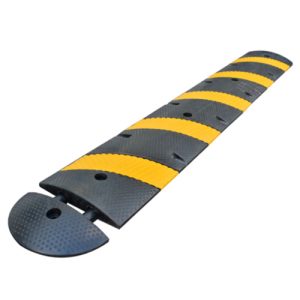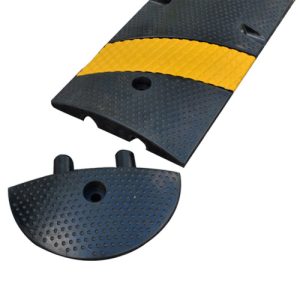Speed bumps are designed to reduce vehicle speed and reduce collisions between vehicles. They are used in residential areas to prevent or slow down traffic.
In cities where there is a high volume of traffic, speed bumps can increase pedestrian safety. They are also useful in urban settings. Many cities in Connecticut have installed speed bumps.
Common uses for speed bumps
The most common uses for speed bumps are on low-speed roads. The maximum comfortable speed to cross a speed bump is five miles per hour. Therefore, they are appropriate for parking lots and private roads with lower-speed limits. The other most common application for a bump is on residential streets with speed limits of 25 miles per hour. If you need a higher-speed bump, you should install the corresponding speed hump. Another important use for speed bumps is reducing accidents. They can make pedestrians safer. Children are particularly susceptible to injuries and accidents, and they are disproportionately affected by automobile crashes. A speed bump can decrease the risk of injury or death by up to 53%. If you’re planning a road project, speed bumps are an excellent solution. However, they are not always the best option.Speed bumps vary in height and length
A bumps’ travel length is typically three to 20 feet. A longer bump reduces speed by about five miles per hour. A shorter bump can reduce a vehicle’s speed by as much as ten miles per hour. Often, speed bumps are placed mid-block between intersections, so they slow traffic and slow emergency vehicles down. Unlike the speed bumps, speed humps are a form of road surface with a stepped surface. The bumps are usually positioned between three and twenty feet apart. In a pinch-point, the height of the bump is four to eight feet. If you want to slow a vehicle down, you can use a bump between two and ten feet. If you’re traveling at a slower pace, a rumble strip is a better choice.6’ Economy Recycled Rubber Heavy Duty Speed Bump
| SKU | Description | Length | Height | Width | Weight |
|---|---|---|---|---|---|
| SB206FT | 6 Ft Speed Bump (1) 6′ Section With no End Caps | 72″ | 2″ | 12″ | 48.40 |
| SB207FT | 7 Ft Speed Bump (1) 6′ Section + (2) End Caps | 86″ | 2″ | 12″ | 55.40 |
| SB213FT | Single Lane 12 Ft Speed Bump (2) 6′ Section With no End Caps | 144″ | 2″ | 12″ | 96.80 |
| SB219FT | Double lane 19 Ft Speed Bump (3) 6′ Section + (2) End Caps | 230″ | 2″ | 12″ | 152.20 |
| SB225FT | 25 Ft Speed Bump (4) 6′ Section + (2) End Caps | 302″ | 2″ | 12″ | 200.60 |
| SB2ECAP | End cap | 7′ | 2′ | 12′ | 3.50 |
Premium Recycled Rubber Safety-Striped
| SKU | Description | Length | Height | Width | Weight |
|---|---|---|---|---|---|
| SB3039I | 39″ Speed Bump (1) 39″ Section With no End Caps | 39″ | 2″ | 13.7″ | 36.20 |
| SB3117I | 117″ Single Lane Speed Bump (3) 39″ Sections With no End Caps | 117″ | 2″ | 13.7″ | 108.60 |
| SB3137I | 137″ Single Lane Speed Bump (3) 39″ Sections + (2) End Caps | 137″ | 2″ | 13.7″ | 124.20 |
| SB3234I | 234″ Double lane Speed Bump (6) 39″ Sections With no End Caps | 234″ | 2″ | 13.7″ | 217.20 |
| SB3254I-2 | 254″ Double Lane Speed Bump (6) 39″ Sections + (2) End Caps | 254″ | 2″ | 13.7″ | 232.80 |
| SB3ECAP-2 | End cap | 10″ | 2″ | 13.7″ | 7.80 |
Recycled Rubber Speed Hump
| SKU | Description | Length | Height | Width | Weight |
|---|---|---|---|---|---|
| SH1018I | 18.75″ Speed Bump (1) 18.75″ Section with no End Caps | 18.75″ | 1.25″ | 2″ | 22.20 |
| SH1112I | 112.5″ Single Lane Speed Bump (6) 18.75″ Sections with no End Caps | 112.5″ | 1.25″ | 2″ | 133.20 |
| SH1128I | 10 Ft Single Lane Speed Bump (6) 18.75″ Sections + (2) End Caps | 128.5 | 1.25″ | 2″ | 148.80 |
| SH1225I | 225″ Double Lane Speed Bump (12) 18.75″ Sections with no End Caps | 225″ | 1.25″ | 2″ | 266.40 |
| SH1241I | 20 Ft Double Lane Speed Bump (12) 18.75″ Sections + (2) End Caps | 241″ | 1.25″ | 2″ | 282.00 |
| SH1ECAL | LEFT End Cap | 8″ | 1.25″ | 2′ | 7.80 |
| SH1ECAR | RIGHT End Cap | 8″ | 1.25″ | 2′ | 7.80 |
Heavy Duty Rubber Speed Hump
| SKU | Description | Length | Height | Width | Weight |
|---|---|---|---|---|---|
| SH2019I | 19.75″ Speed Bump (1) 19.75″ Section With no End Caps | 19.75″ | 2″ | 3″ | 48.00 |
| SH2121I | 10 Ft Single Lane Speed Bump (5) 19.75″ Sections + (2) End Caps | 121.75″ | 2″ | 3″ | 273.00 |
| SH2240I | 20 Ft Double Lane Speed Bump (11) 19.75″ + (2) End Caps | 240″ | 2″ | 3″ | 561.00 |
| SH2ECAL | LEFT End cap | 11.5″ | 2″ | 3′ | 16.00 |
| SH2ECAR | RIGHT End cap | 11.5″ | 2″ | 3′ | 16.00 |




